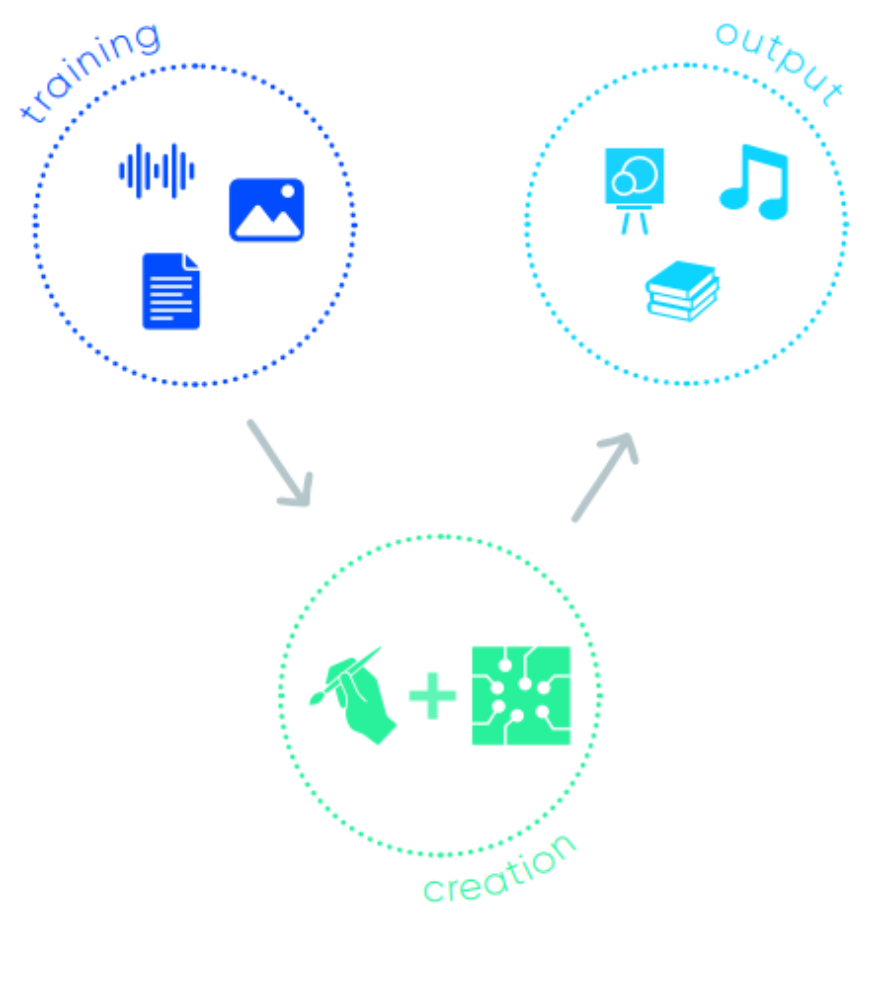United States of America - US Copyright Office - Copyright protection for comic book containing AI-images
The United States Copyright Office had to decide on the question whether a comic book containing AI-generated images could be copyrighted. It decided to grant copyright for the comic book as a whole but not for the individual illustrations, since the author had creative control over the story and the arrangement of the generated images, but not over the image generation itself.
What: administrative decision
Impactscore: 2
For who: creative sector, AI-developers, policymakers, creators
Summary
The case concerns the comic book “Zarya of the Dawn” by Kristina Kashtanova. The comic book contained text that was fully written by the author, but images that were generated by an AI-programme (Midjourney).
The first request for copyright registration by Kashtanova was fully denied, due to the fact that she did not mention the use of any artificial intelligence when developing the comic book. This made the request substantially incomplete. Subsequently, Kashtanova filed a second request which mentioned that she used the AI-programme Midjourney as an tool and still wanted the text and creative input over the images, including the editing and arrangement thereof, to be copyrighted.
The response letter from the US Copyright Office to this second request discusses the necessary US legal standards that have to be met in order to claim copyright, such as sufficient creativity and human authorship. Considering these criteria, the Copyright Office declares the text itself as being registerable. The same conclusion is reached for the arrangement and selection of the images as a creative element of the book. However, the individual images that were generated solely by the AI-programme Midjourney are not registerable due to the lack of human creativity. An exception can be made for the individual images that were generated by Midjourney, but afterwards edited personally by the author.
The US Copyright Office reviewed this second request by checking the legal standards, demanding a level of human creativity as decided in Feist Publications Inc. v. Rural Telephone Service Company Inc. In this decision, the Supreme Court held
(….) originality as a prerequisite for copyright protection. The constitutional requirement necessitates independent creation plus a modicum of creativity”.
This prerequisite was disputed in the case of “Zarya of the Dawn”, since the images were not human-made. The work was therefore divided into three elements: the text, the individual images and the fully arranged comic book.
The text
Since the text is written solely by the author without the use of an AI-programme, there is no doubt concerning the possibility of copyright registration. The required level of creativity is met and the text is thus registerable.
The individual images
In essence, the US Copyright Office found that the individual images are not registerable because of the lack of human interaction during the process. Kashtanova did not create the images herself and relied fully upon the AI-programme Midjourney. However, Kashtanova claimed that certain images were edited by her personally after being generated, such as widening the mouth of the character or adapting the colors in the background. To the extent that there were substantive elements adapted by the author, an unique image was created and could be registerable for copyright according to the US Copyright Office.
The arrangement of images
Considering the selection, coordination and arrangement of the generated images, the US Copyright Office finds this aspect of the work to be a result of human creativity. The creative choices that were made by the author are registerable, making the fully arranged comic book a copyrighted work. Even though there is a slight nuance concerning the individual images, the book as a whole is eligible for copyright registration as requested by Kashtanova.
To summarize, there is a clear distinction to be made between the different elements of a partially AI-generated work: the generating of content is a non-human process that cannot be copyrightable, but the creativity that is required during the coordination in the post-production can bear evidence of human-authorship. This makes the final output of such a work to be registerable as a whole, as long as the AI-programme was only used as an assisting tool by the human author.

However, this decision received criticism due to the narrow interpretation of “human input”, which does answer fully to the questions regarding copyright of AI-assisted works. The US Copyright Office found that the generated images in “Zarya of the Dawn” did not have enough human creativity, since Kashtanova could not predict the results from Midjourney ahead of time. Critics refute this by comparing the use of Midjourney to taking a photograph, where the photographer aims for a certain result but often captures something different (e.g. when photographing wild animals). This margin of creativity that a photographer has, can be compared to the influence of Kashtanova when entering a prompt into the AI-programme. Therefore, some experts wished to have seen that the US Copyright Office had created a norm for AI-assisted works to be eligible for copyright protection, taking into account the (possible) human input that is required to generate an image exactly like the human authors intended, based upon the specific prompt that was formulated by them.
Further Reading
In case you are interested in the situation under Belgian/European copyright law, please see: https://data-en-maatschappij.a...